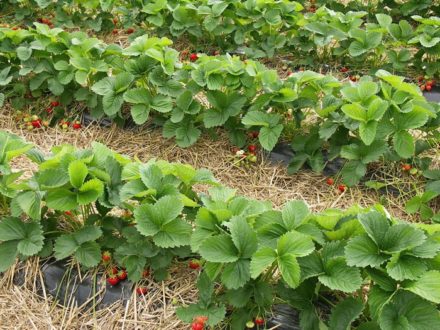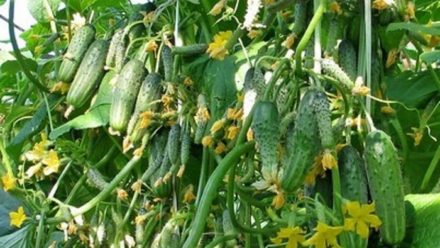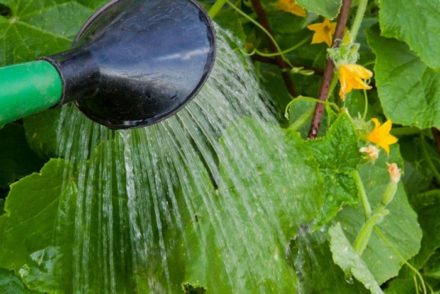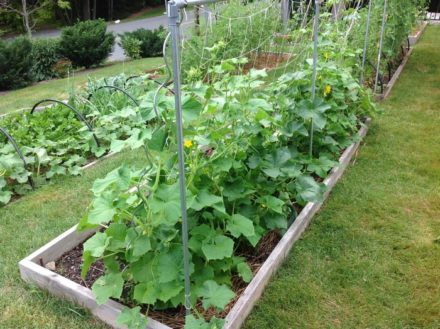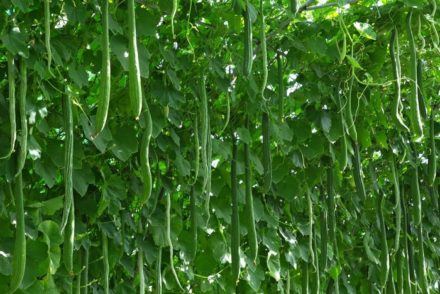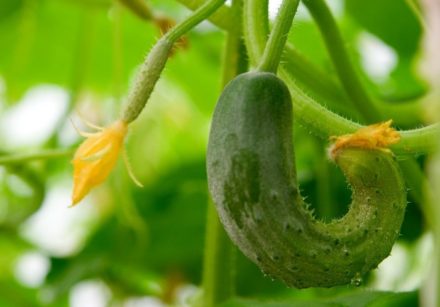For cucumber seedlings, loose universal soil from a gardening store is quite suitable. The supply of nutrients contained in it will be enough for plants to be planted in a greenhouse or open beds. The area for planting is prepared in advance, bringing the soil to a state that best meets the requirements of the crop.
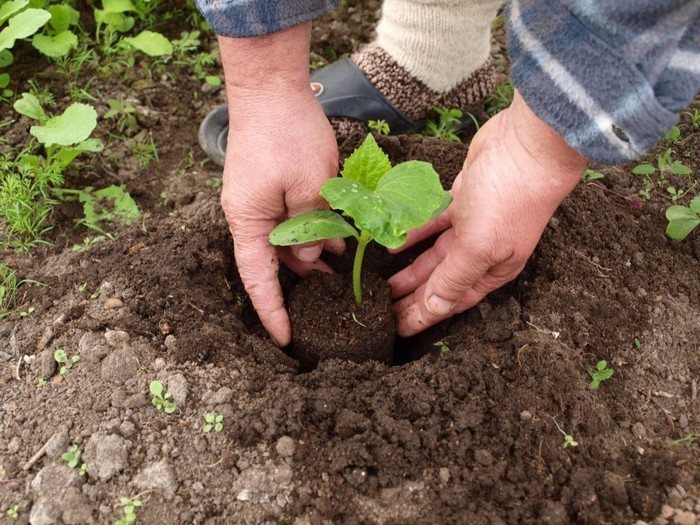
What soil is suitable for cucumbers
First of all, it is worth noting what kind of land cucumbers should not be planted on. The following types of soil are not suitable for the crop:
- marshy;
- swamp-podzolic;
- peat bog;
- soddy-podzolic;
- podzolic;
- saline;
- red soil
These lands require deoxidation and do not protect the roots well from temperature fluctuations. If this is the soil on the site, it will have to be limed and flavored with humus, after which warm beds will be created for the cucumbers.
To plant vegetables, you need neutral soil with a high moisture content. It is desirable that it be loamy soil. Sandy soil loses moisture too quickly. The planting area must be level. In the lowlands, cucumbers will be cold, because they are a heat-loving vegetable crop. Elevated areas are also not suitable due to low moisture content.
Determining and adjusting acidity
You can check the acidity of the soil yourself using litmus paper or conduct a test using vinegar. To do this, place some soil in a glass or plastic bowl and water it with acetic acid. If there is no reaction in the form of bubbles, then the soil is acidic and needs liming.
Instead of lime, you can use dolomite flour. Deoxidation is carried out in the fall by adding limestone in small portions and checking the reaction again. The indicator suitable for the culture is 4.5-5 pH. Increased soil acidity can also be determined by the plants growing on it. If horse sorrel, meadow grass, horsetail, and mosses grow on or near the site, then the acidity level is high.
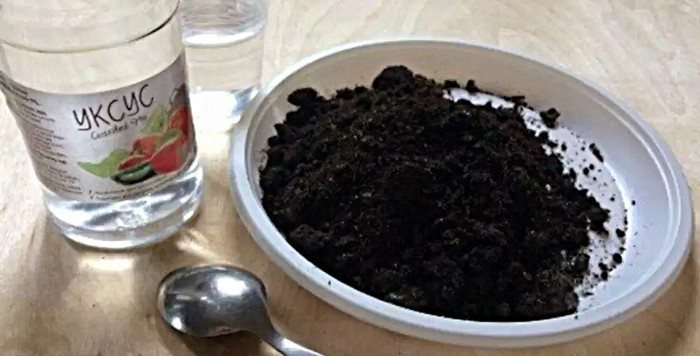
Application of crop rotation rules
It is necessary to pay attention to compliance with the rules of crop rotation. The best predecessors for cucumbers are crops such as cabbage, tomatoes, potatoes, and onions. If the plot is small, you can interrupt the cycle of growing the same crop using green manure by sowing rye, oats, and clover. In any case, the predecessors should not belong to the pumpkin family.
Preparing the land for planting
Since cucumber roots need warmth, seedlings are planted in the garden after the soil has warmed to + 18 °C. The temperature must be measured at the planting depth. Land requirements do not depend on where cucumbers will be grown - in a greenhouse or in open ground. However, there are still some differences in soil preparation.
Preparatory activities in the greenhouse
Pathogenic microorganisms and pest larvae accumulate in closed ground.The first step is to disinfect the soil in the greenhouse in the spring. Every few years, the top layer of soil 8-10 cm thick is replaced with fresh soil. In other years, the following procedures are carried out to choose from:
- Dig up the soil in the fall with the addition of bleach (200 g per 1 sq. m). At least six months must pass before planting.
- 10-15 days before planting the seedlings, pour boiling water over the soil and then cover with film. A day later, the ground is dug up and harrowed. After 3 days, the soil needs to be dug up again.
- You can shed the soil 2 weeks before planting with a 2% concentration of formalin solution. Then the bed is covered with film for 3 days, dug up again, and harrowed.
- Fungicides are also used to disinfect the soil - Bordeaux mixture, Fitosporin M, Phytocide, Pentaphage. Based on these products, a solution is prepared with which the soil is abundantly moistened.
The greenhouse must be thoroughly washed inside and out. After disinfecting the land, it needs to be fertilized. For 1 sq. m of beds, apply 4-6 kg of humus or mineral fertilizers (40 g ammonium nitrate, 200 g potassium sulfate, 300 g superphosphate). You can use ready-made nutrient mixtures for cucumbers.
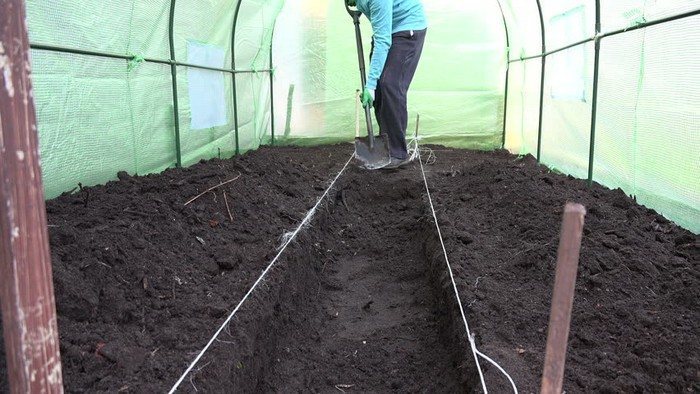
Preparatory activities in the open ground
The earth should be dug up with a spade in the fall (lumps should not be broken). In the spring, the ground is dug up again, loosened, and ridges are formed. For every sq. meter it is necessary to apply fertilizer:
- 1 bucket of humus or compost;
- 15 g ammonium nitrate;
- 20 g of potassium sulfate;
- 40 g superphosphate.
At the time of planting, the ground should be free of weeds. If the grass has already sprouted, it is pulled out. Instead of potash and phosphate fertilizers, you can add wood ash (200 g/sq. m).
Creating a warm bed
It’s great if you have the opportunity and desire to make a warm bed for cucumbers. In the northern regions, this method of growing becomes a real salvation for summer residents. The advantage of the method is not only the ability to provide warmth to the roots of the cucumbers. When you create a multi-layer bed, the decomposition of organic matter releases nutrients.
Only mineral fertilizers can be applied to cucumbers. Less time and effort will be required to care for plants, and the harvest will be greater. This method is not suitable for southern regions; excess heat may cause cucumber roots to burn.
Arranging a warm bed in layers:
- Boards, branches and other wood waste are placed at the very bottom.
- The second layer is raw materials in the form of tops, leaves, and vegetable peelings.
- Then compost or manure is laid.
- The top layer should be fertile soil.
In dry areas, the bed is deepened. In the north and central Russia, on the contrary, raised ridges or at ground level are used. Beds flush with the ground are the most popular option among summer residents. The finished “layer cake” is poured with boiling water and covered with film for 5-7 days. After this, they begin planting cucumbers.

You cannot count on good yields just by planting seedlings in suitable fertilized soil. In the future, the plants will need care, consisting of abundant watering, regular fertilizing, and measures to protect them from pests. For planting in cold regions, it is better to choose hybrid varieties; they are more resistant to weather changes and lack of heat.


